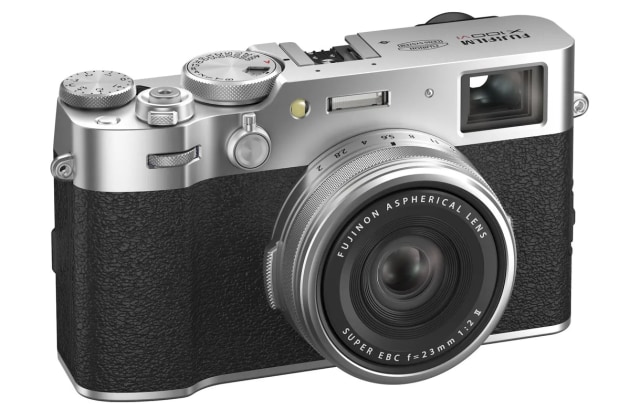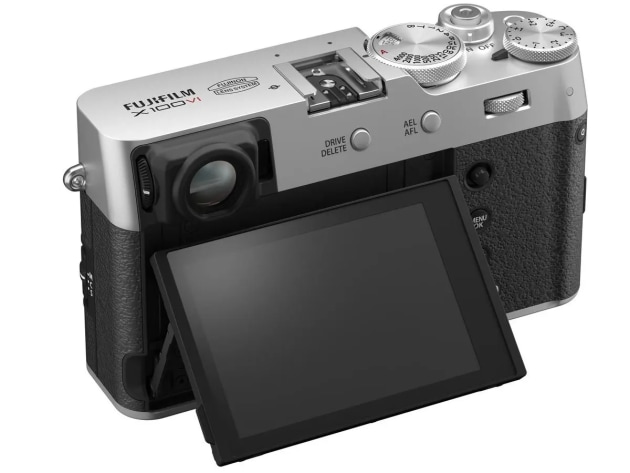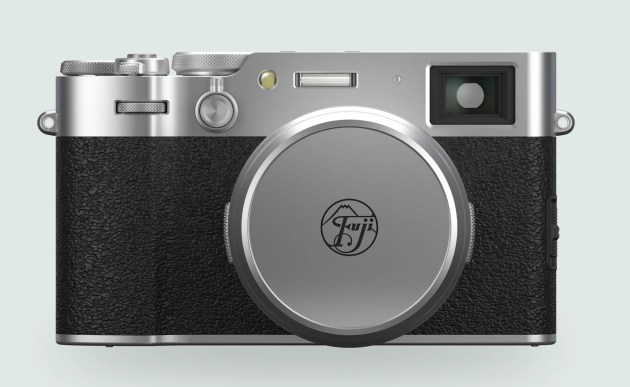Street and documentary photographers around the world are overjoyed to hear that Fujifilm has finally announced the X100VI, the long-awaited successor to the hugely popular (and hard to get hold of) X100V.
The Fujifilm X100 series was born in late 2010 and was instantly popular due to it's lightweight compact size, cool retro looks and of course it's quality images stemming from a fast, fixed 35mm (equivalent) f/2 lens.
It quickly became the darling of the street and documentary photography world as many photographers didn't necessarily want to lug their huge DSLR's around on their 'day off', nor pay the exorbitant price tag of similarly styled Leica cameras. But also importantly for street photography, it was a 'low key' camera, that created great images in low light.

Since the original launch we've seen 5 previous versions of the camera – this would seem obvious but the naming convention has been unobviously X100, X100S, X100T, X100F and X100V. With each new version, the previous idiosyncrasies had been (partially) ironed out, along with adding the usual minor improvements. But these tweaks did not make a compelling 'need' to upgrade with each new generation (personally, I always skipped a generation when upgrading)
But this new X100VI is definitely, and finally a true generation jump.
Looking practically the same on the outside as the predecessors, the new standout feature is a 40MP BSI CMOS sensor with image stabilisation and AI focus technology.
What else is new?
The X100VI includes IBIS for the first time, offering 6.0EV of correction (but only 5.5EV if you're using the hybrid viewfinder in optical mode). Better yet, this comes at almost no real cost to the physical size of the camera, with the X100VI just 2mm deeper and 43g heavier than the X100V, for an overall weight of 521g.

Internally, the X100VI features Fujifilm's latest and greatest X Processor 5, which means it offers many of the same video features as the X-T5, and is, according to the company, “almost” twice as fast as the X100V.
That means 10-bit recording, 6.2K cropped capture, and 4K at up to 30p from the sensor's full with or at up to 60p with a 1.14x crop.
Meanwhile, the X100VI also gains a screen with slightly more articulation, and subject recognition AF, and it also relies on the same NP-W126S battery as the previous few X100 models. This is an 8.2Wh battery from which the camera is rated to deliver 450 shots per change using the optical viewfinder or 310 shots with the EVF.

Other features
Surprisingly, the X100VI still features a UHS-1 SD card slot — pretty slow for a camera in this price bracket in 2024.
Speaking of things that are the same, the electronic viewfinder and rear LCD are also unchanged, at 3.69 million and 1.62 million dots, respectively. Furthermore, it seems that the top ISO selection dial still hasn't been improved with its fiddly lift and drop function. Fortunately, the auto ISO is one of the best around, and the exposure compensation dial is easy to change. It does make us wonder why they didn't change the exposure compensation dial to ISO instead? Perhaps this can be customisable?
Meanwhile, the X100VI will ship with 20 Fujifilm film simulations, including the 'Reala Ace' simulation previously found on the GFX100 II.

Pricing and availability
The X100VI will be available in silver or black and is expected to start shipping in early March. At an RRP of $2,899, the X100VI is $550 more expensive than the X100V was at launch in 2020 ($2,349), although based on the prices even used models have been getting, this shouldn't be too much of a surprise.
In addition, alongside the standard silver and black models, Fujifilm has announced it will also release a limited-edition version of the camera that’s engraved with the corporate brand logo from Fujifilm’s founding in 1934 (celebrating their 90th birthday). There are 1,934 units available worldwide and they are retailing for $3,499 directly from Fujifilm (you have to enter a ballot on their website)
Each of these cameras will have a unique serial number, and the company says they will come packaged in a special, soft-release box that includes a special strap and Fujifilm history cards.
Capture will be getting our hands on a review model soon – so stay tuned for a full breakdown.
You can find out more by visiting the Fujifilm website.






